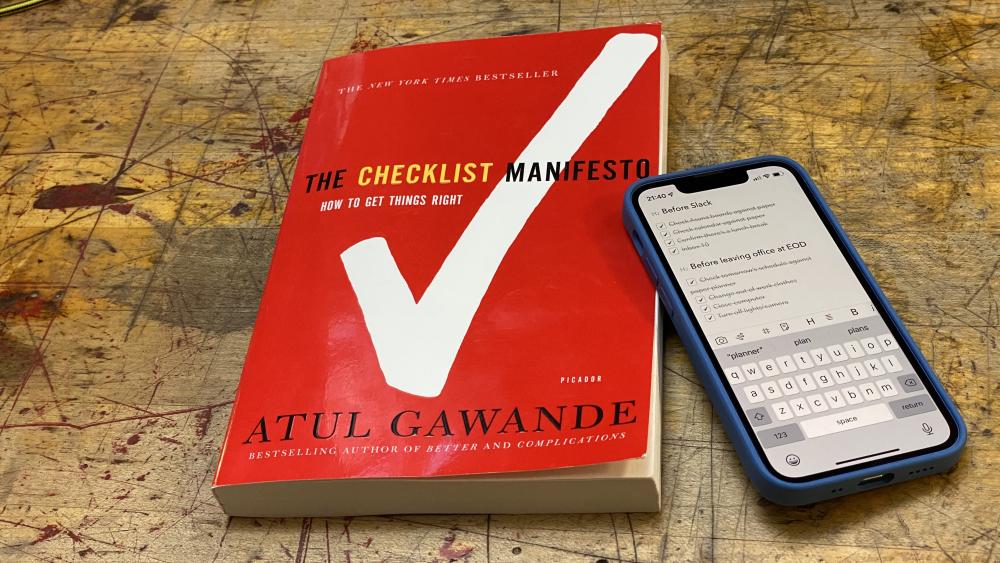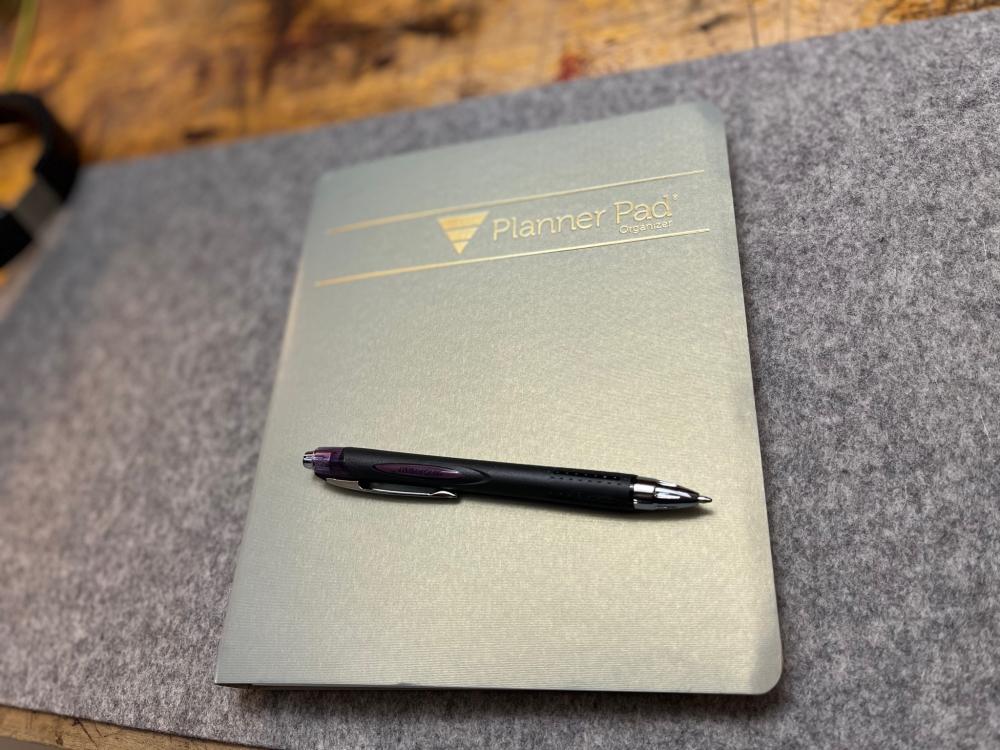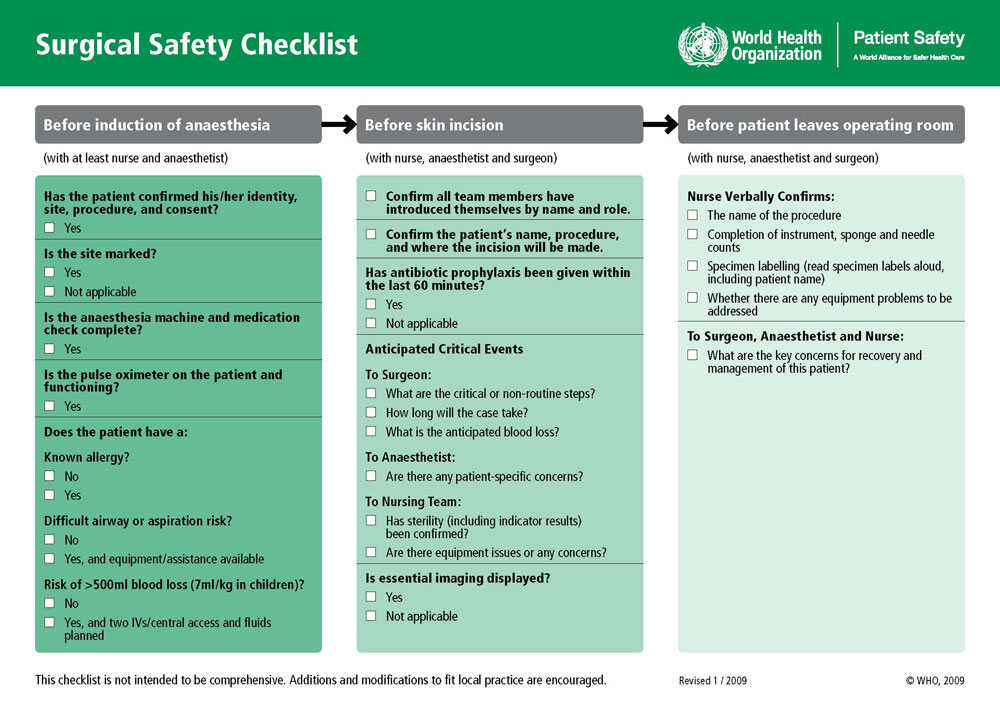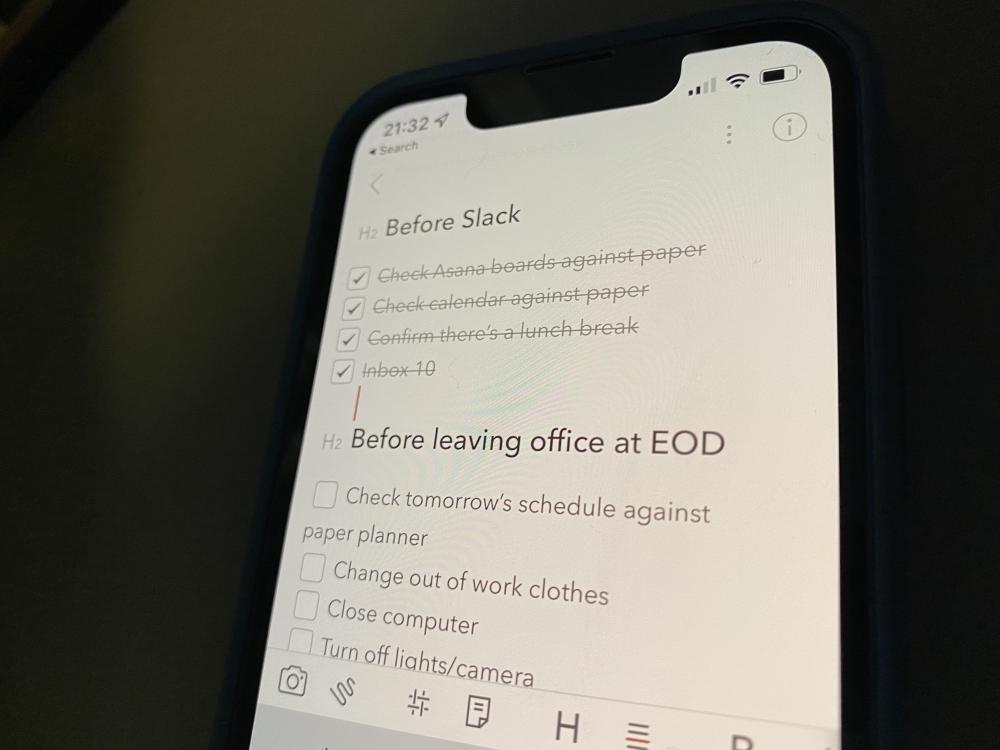Look out. Here comes a blog post about checklists.

TL;DR
Inspired by The Checklist Manifesto, I have three small checklists that I use at pause points in my workday:
- Before I turn on my work computer
- Before I look at Slack
- Before I leave my home office
These checklists track small habits like starting the workday with a full water bottle on my desk and ending it by checking tomorrow’s Google Calendar against my paper planner.
I could skip nearly any one item on any of these checklists on any given day without much of a problem. But checking off every item every day gives me a tiny sense of accomplishment and a growing feeling of control over my time in a year when I really needed that.
Why do I need clearer transitions in my day?
Even though I’ve been primarily working-from-home since 2014, the stress of the pandemic and working from home exclusively in 2020 and 2021 started to take a toll on me. I found that I was getting worse and worse at separating my work time and mindset from my personal time and headspace. By mid-2020, I was pretty much never not thinking about work.
I noticed that I was bad at distinctly starting and ending my work days. I’m usually the parent doing daycare drop-off and my wife, Paige, usually does daycare pick up. In the mornings I would often fire up my work laptop right away after drop off. I’d bounce back and forth between emails and Slack messages while finishing breakfast, shaving, and so on.
At the end of the day I would often work right up until the moment Paige and the boys got home from daycare. I’d then rip myself away from the computer and join dinner and the bedtime routine for the boys. Except my mind would still be on work. And then I’d check Slack on my phone…
I needed to interrupt this pattern.
What’s on the checklists?
And interrupting it hasn’t required much! These are some pretty short and simple lists.
Before turning on work computer
- Shave (I want to avoid realizing right before my first meeting that I haven’t shaved yet)
- Dress for work (The WFH lifehack of changing into different clothes for working time really does work for me)
- Full water bottle on desk (Yes, I do need to check a checkbox every day to keep myself hydrated)
- Paper planner on desk (I can’t use it if it’s not there)

This list is short enough that I’m not needing to read it to prompt myself step-by-step to prepare for the work day. I check the checkboxes all once. Usually. Sometimes I realize as I’m turning on my computer that I don’t have a water bottle and that there’s no time like the present to get one.
Before looking at Slack
Right after I open my work computer I need to ensure that I don’t fall right down the time sink that is Slack. So I check the places that are more likely to contain the most important topics for me to think about, not the ones with the most recent messages.
- Check Asana boards against paper planner
- Check Google Calendar against paper planner
- Confirm there’s a scheduled lunch break (I unintentionally lost a lot of weight in the first months of the pandemic, partly because I wasn’t always breaking for lunch)
- Inbox 10 (I strive for Inbox Zero but I get under 10 first thing in the morning is pretty good)
Before leaving office at EOD
- Check tomorrow’s schedule against the paper planner (This item greatly cuts down on that feeling of “I know tomorrow’s going to be busy but I don’t remember all of it”)
- Change out of work clothes (Gotta get out of my dress shirt before joining a likely messy dinner time with two small boys)
- Close computer
- Turn off lights/camera (My video conferencing lights, camera, and microphone set up probably warrant their own blog post)
With this short list I feel much more relaxed joining family dinner time and I’m much more present.
When did I start doing this?
A few months ago I read The Checklist Manifesto by Atul Gawande and I was immediately hooked by the overlap with my work world in web development. The book primarily traces the creation of surgical checklists that cut down on mistakes and miscommunications between the physicians, nurses, and technicians performing a surgery. But before I figure out what to do with the parallels I see between medical checklists and the observations I’ve been making for years about web teams, I saw something more personally actionable.
I saw a similarity between these three surgical checklists for moments to catch errors and three times in my workday that I needed to check myself.

Where do I track the lists?
I use the Bear app for Apple devices.

It’s less of a Todo list app and more of a notes app. I like the informality of a notes app that happens to have checkboxes instead of something that more formally tracks tasks. These aren’t tasks that I need to track over time. I’m not going overboard with The Quantified Self (again) here. I just want a low friction way of checking that I’ve done the stuff that’s a good idea to do every day.
Who cares?
When I was younger I felt like I didn’t need these sorts of reminders. In high school and college I had no real system for tracking what I had to do. I was just never not thinking about school work and other responsibilities. Writing down lists of what I had to do felt like a waste of time compared to just doing the things.
Now, in the endless WFH era I need more structure. Let me know on Twitter what’s working for you.